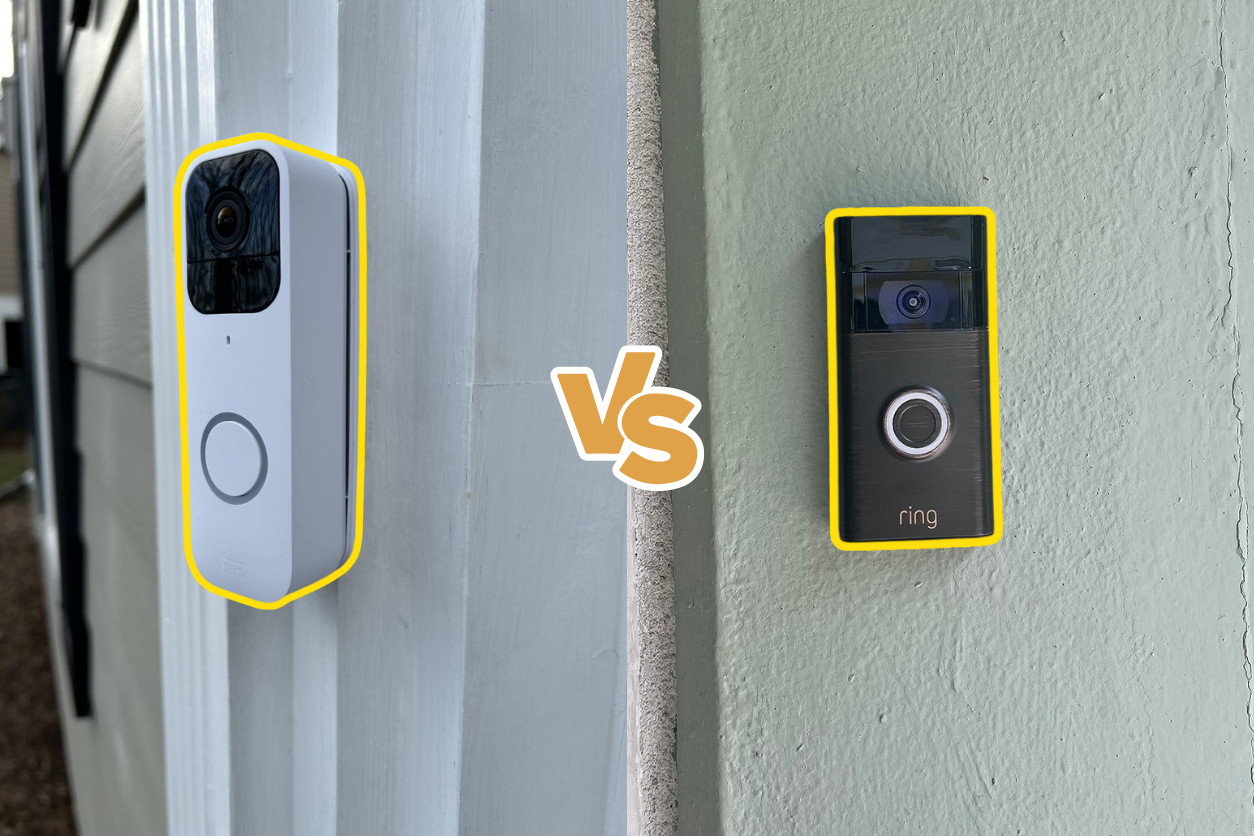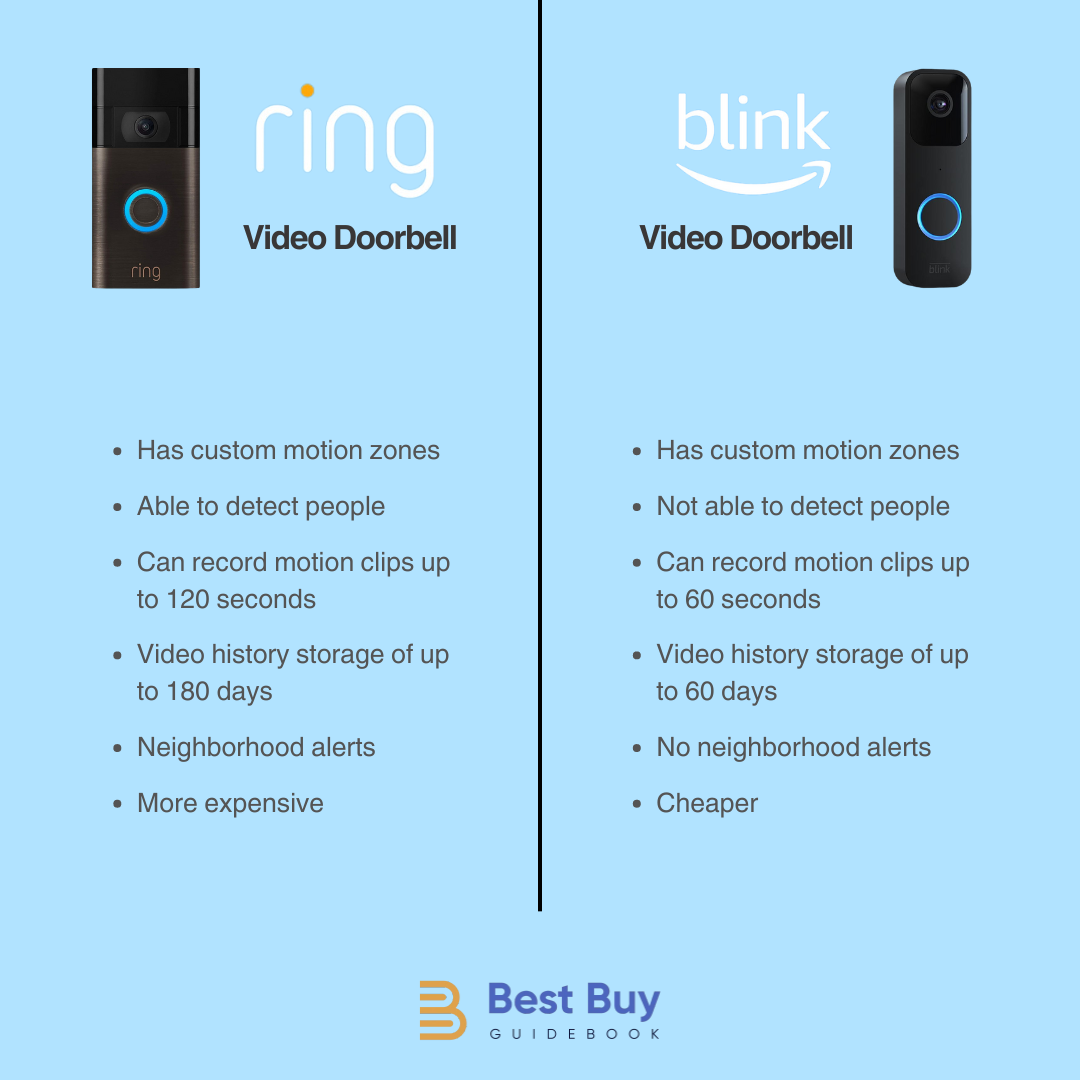Blink vs Ring: Which Security System is the Better Investment?

Blink and Ring are the two standout choices when it comes to smart home security. The competition is fierce between the two brands; after all, both fall under the Amazon umbrella, but if you had to choose one over the other, the differences in price, features, and user-friendliness are too hard to ignore. While Ring is a full-on home security system, Blink positions itself as the more wallet-friendly option for cameras without any system integration. This clever market segmentation has let Amazon maximize its reach and tap into different customer bases.
The differences between these two are not just in their product lineup but also in their technological focuses and price points. For example, Blink’s most premium camera is notably cheaper than its Ring counterpart—Ring may be the brand with more features, but Blink offers substantial value with competitive pricing. Let’s draw a detailed comparison between these two giants to help you decide which brand might be the right fit for your home security needs.
Price Comparison: Blink vs. Ring
When it comes to choosing between Blink and Ring, price plays a significant role for many consumers. Both brands cater to different budget ranges and offer distinct features that can influence a buyer’s decision based on their specific security needs.
Blink’s Pricing Structure
Blink offers a range of cameras that are generally more wallet-friendly. At the entry-level, the Blink Mini 2 and Blink Mini Pan-Tilt are priced at $40 each. These cameras are designed for indoor use and plug directly into power sources, making them convenient for those who do not want to deal with batteries. The Blink Mini Pan-Tilt is particularly popular due to its ability to provide wider room coverage with its pan and tilt features.
For outdoor surveillance, Blink’s Outdoor 4 (4th Gen) is the most expensive option at $100. This model is designed to be wire-free, enhancing its ease of installation, and boasts a 2-year battery life, making it a robust option for outdoor security.
Blink also offers a video doorbell with two-way audio for $60, which can function as a standalone unit or part of a broader system. The versatility in its setup options, combined with a sleek design, makes it a favorite among homeowners.
Ring’s Pricing Options
Ring’s pricing spectrum is broader, with its most basic Video Doorbell starting at $50. However, for those seeking high-end features, the All-new Battery Doorbell Pro steps up the game with a 1536p camera and 3D motion detection priced at $150. This model is part of Ring’s strategy to offer advanced technology in its doorbells, catering to users who prioritize higher video quality and enhanced security features. The 1080p video doorbell is still the more popular choice at $100. Surprisingly, it’s even more popular than Blink’s doorbell despite being $40 more expensive.
For standalone products, Ring starts at an accessible $30, but outdoor surveillance options like the outdoor floodlight camera jump to $200, reflecting the added functionalities and robustness suitable for exterior monitoring.
The Ring Stick Up Cam, priced at $100, presents a versatile option with both battery and plug-in capabilities. This model is ideal for users looking for flexibility in their installation without compromising on the quality of surveillance.
For comprehensive home security, Ring offers system kits such as the 8-piece Alarm kit for around $250 and a more extensive 14-piece kit for $330, designed for larger homes requiring broader coverage.
Product Diversity
Both Blink and Ring offer a range of security cameras, each with its unique features catering to different user needs.
Video Doorbells
Blink: Blink offers a straightforward video doorbell that integrates with their home security ecosystem. It’s designed to be affordable and easy to install, appealing to homeowners looking for a no-frills security solution.

Ring: Ring provides a more extensive selection of video doorbells, ranging from basic models to advanced ones with higher video resolution, professional monitoring options, and enhanced connectivity features. This variety caters to a broader audience, from budget-conscious users to those seeking high-end security solutions.
Indoor Cameras
Blink: The Blink Indoor Cam is compact and wireless, making it versatile for placement anywhere in the home. Its simplicity is one of its biggest selling points, appealing to those who need basic surveillance without complex installation.
Ring: Ring’s Indoor Cam and the Stick Up Cam offer more flexibility in terms of installation and usage. The Stick Up Cam, for example, is weatherproof and can be used both indoors and outdoors, providing more value through its versatility.
Outdoor Cameras
Blink: Blink’s Outdoor Cam is designed to be robust and weather-resistant, ideal for monitoring outdoor spaces. It’s wireless, which allows for greater flexibility in placement.
Ring: Ring offers several outdoor cameras, including models integrated with floodlights to provide not only surveillance but also lighting for security. These models tend to have more advanced features, such as motion tracking and neighborhood alert systems.
Floodlight and Spotlight Cameras
Blink: Blink recently introduced a floodlight camera that pairs with their outdoor camera. It’s activated by motion and is designed to enhance the visibility and security around homes at night.
Ring: Ring’s range includes both spotlight and floodlight cameras, which come with added features like sirens and customizable motion zones. These features make Ring’s cameras a more comprehensive security solution compared to Blink’s more straightforward offerings.
Installation and Compatibility
Ease of installation is a significant selling point for both brands, but they cater to different user preferences.
Blink cameras are generally easier to install due to their wireless design. This makes them suitable for users who prefer a simple, straightforward setup without extensive wiring.
Ring offers both wired and wireless options, providing flexibility for users who might prefer a permanent, hardwired installation for reliability or those who opt for the simplicity of wireless setup.
Both brands leverage their compatibility with Amazon Alexa, allowing for voice control and integration into the broader smart home ecosystem. However, Ring’s additional compatibility with IFTTT opens up more possibilities for customized automation and integration with a wider range of devices and services.
Pros and Cons: Blink vs. Ring
Ring Pros:
- Professional monitoring: Unlike Blink, Ring offers optional 24/7 professional monitoring, which can dispatch emergency services if alarms are triggered. This is a big plus if you want extra security beyond just receiving notifications on your phone.
- Extensive product range: Ring offers a wider range of products, including more advanced doorbell cameras with higher resolution options and additional features like 3D motion detection. This variety allows for more tailored security setups.
- Smart home integration: Ring integrates well with a broader range of smart home ecosystems, including Amazon Alexa, Google Assistant, and Samsung SmartThings. This makes it easier to incorporate into your existing smart home setup.
- Feature-rich app: Ring’s app includes more features like setting zones for motion detection and integrating with other Ring products for a more comprehensive home security system.
Ring Cons:
- Higher cost: Ring’s products and subscription services generally come at a higher price point compared to Blink. This includes higher upfront costs for devices and potentially higher ongoing costs for cloud storage and professional monitoring.
- Battery life: While Ring offers some battery-powered devices, their outdoor cameras might not match the battery life that Blink offers, requiring more frequent recharging or replacement.
Blink Pros:
- Cost-effectiveness: Blink devices are generally more affordable, making it a good option for those on a budget. Even their most expensive camera is significantly cheaper than similar offerings from Ring.
- Battery life: Blink cameras, especially outdoor models, often boast extended battery life, reducing the hassle of frequent recharges.
- Local storage option: Blink provides a local storage option via Sync Module 2, which can be a cost-effective alternative to ongoing cloud storage fees. This is ideal if you prefer to keep your data within your home and avoid additional monthly costs.
Blink Cons:
- Limited features: Compared to Ring, Blink’s cameras generally offer fewer features. They might lack advanced video analysis and more sophisticated motion detection capabilities that help reduce false alarms.
- Less advanced integration: While Blink integrates with Amazon Alexa, it lacks the broader smart home compatibility that Ring offers, which could be a dealbreaker if you use multiple smart home platforms.
- Self-monitoring only: Blink does not offer professional monitoring options, which means all monitoring responsibilities fall on you. This might not be ideal for those looking for a more hands-off security solution.
Decades of Combined Expertise
Best Buy Guidebook is a culmination of online publishing lessons learned. From SEO to paid ads, our team has experienced the highest of highs and the lowest of lows. Our goal now is simple: Arm readers with the most information possible.
